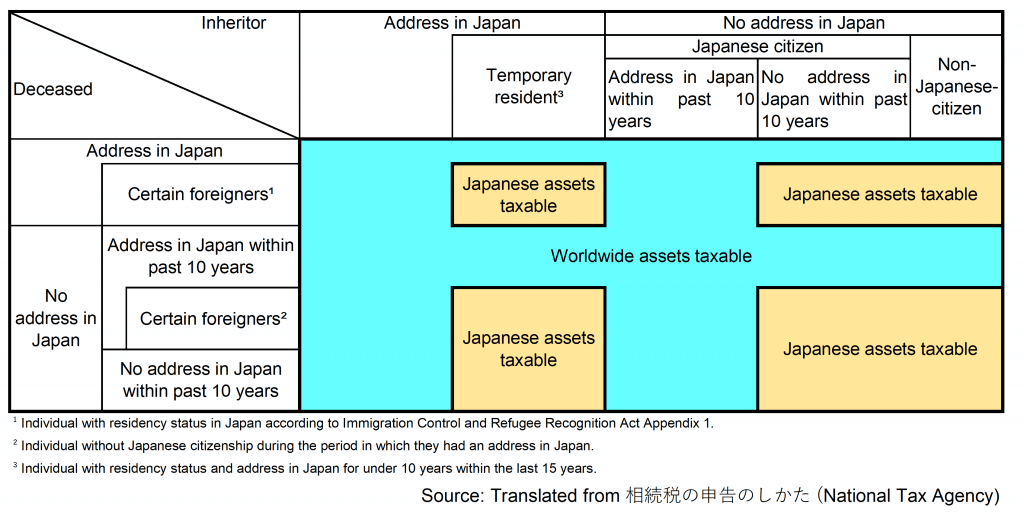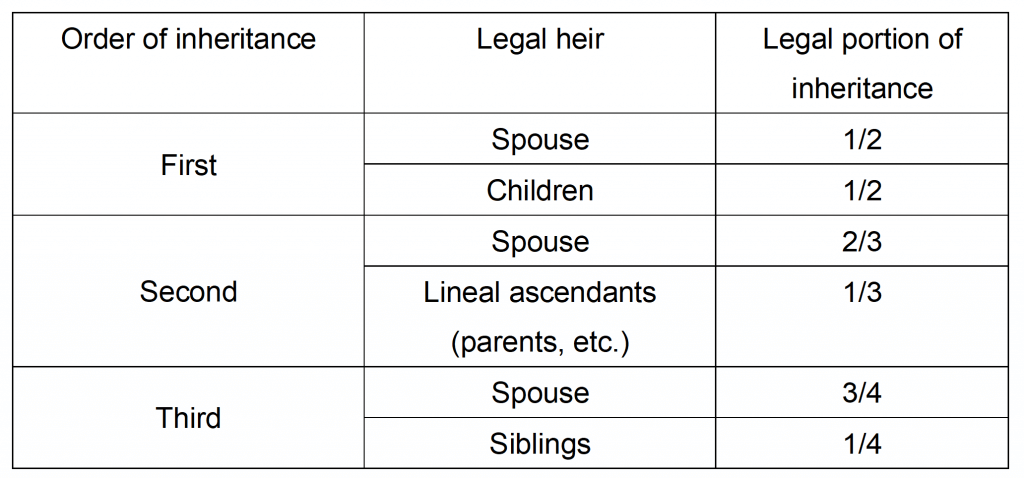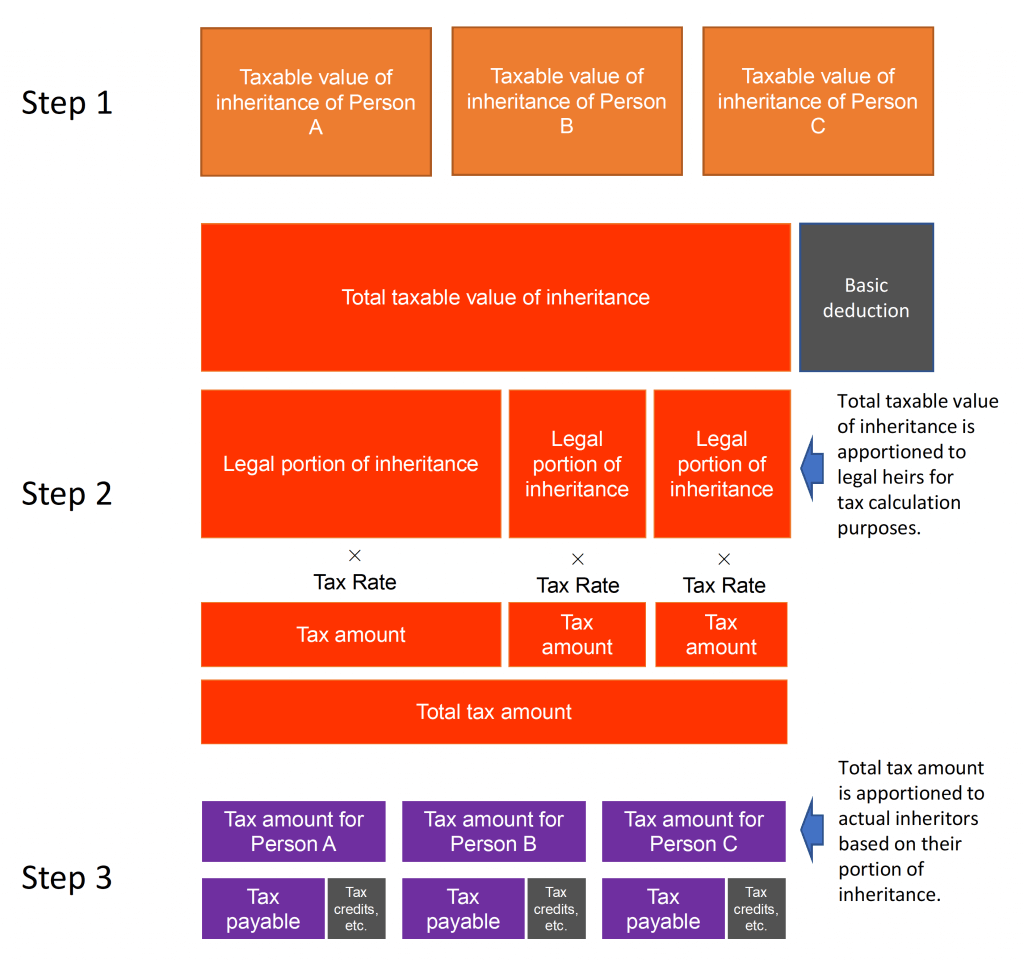Contents
Introduction
Inheritance tax (sōzokuzei) is a national tax imposed on the recipient of money or property from a deceased person. In principle, inheritance is divided among the inheritors based on the deceased’s will or through an agreement reached between the inheritors. Inheritance tax filing and payment are due 10 months from the day after the death of the deceased.
Scope of Taxation
With a few exceptions (graves, assets used in public interest enterprises, etc.), all inherited assets located in Japan are subject to Japanese inheritance tax. In addition, depending on the classification of the deceased and inheritor, overseas assets may also be subjected.

Basic Deduction
A basic deduction applies to the total taxable value of assets to be inherited. If the total taxable value of assets to be inherited does not exceed the basic deduction amount, no inheritance tax shall be imposed and an inheritance tax return will also not be required.
Formula of basic deduction:
30,000,000 + (6,000,000 × number of legal heirs)
(Example 1)
Taxable value of inheritance:
Spouse: 80,000,000 yen
Child A: 10,000,000 yen
Child B: 10,000,000 yen
Total taxable value of inheritance after deduction:
(80,000,000 + 10,000,000 + 10,000,000) – (30,000,000 + [6,000,000 × 3]) = 52,000,000 yen
Tax filing required.
(Example 2)
Taxable value of inheritance:
Spouse: 10,000,000 yen
Child A: 5,000,000 yen
Child B: 5,000,000 yen
Total taxable value of inheritance after deduction:
(10,000,000 + 5,000,000 + 5,000,000) – (30,000,000 + [6,000,000 × 3]) = -28,000,000 yen
No tax filing required.
Legal Heir
The concept of “legal heir” and the associated “legal portion of inheritance” is used in the calculation of basic deduction and inheritance tax amount.

The “order of inheritance” is decided based on the existence of inheritors. (E.g. if the deceased has a child, the first order of inheritance is applied; if not, the second order of inheritance is applied, etc.) Note that the spouse is always one of the legal heirs.
Calculation of Inheritance Tax
The calculation of Japanese inheritance tax is a three-step process.
First, the total taxable value of inheritance is calculated; second, the basic deduction is subtracted from the total taxable value of inheritance, whereby the total inheritance tax amount is arrived at through allocations based on the “legal portion of inheritance.”; finally, the total inheritance tax amount is apportioned to the actual inheritors, various tax credits are applied, and the final tax to be paid is calculated.
One of the most notable tax credits is the spousal credit, whereby the spouse may be exempted a large portion of their tax amount depending on their inheritance.

TOMA’s Services
In this blog entry, we have given a brief overview of the inheritance tax calculation procedure. In reality, each of the steps outlined in section 5 requires the judgement of a Certified Public Tax Accountant, including the following:
– Determination of value of taxable assets, including deductible liabilities
– Identification of legal heirs, which can be complicated depending on family composition
– Applicable tax additions and tax credits after tax amounts are calculated
– Applicable special provisions
If you are a recipient of inheritance, whether from Japan or overseas, you may be subject to Japanese inheritance tax. Please contact us through the form below for a free consultation.
On-demand Seminar Information

A Guide to the Qualified Invoice System (On-demand Seminar)
The Qualified Invoice System, starting October 2023, introduces new changes to the Japanese consumption tax rules and will affect many businesses across Japan.
The system requires a redesign of existing invoices, as well as a review of the business’ consumption tax status and suppliers.
This online seminar aims to give you an overall understanding of the Qualified Invoice System and provide measures to help you navigate the new requirements.




